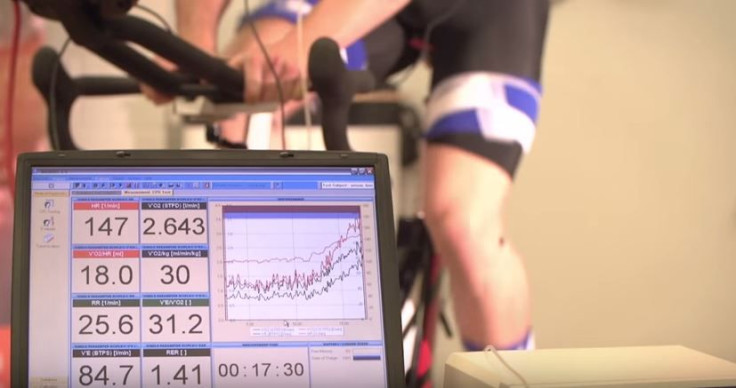Pedaling Like A Tour De France Cyclist Is A Waste Of Energy For The Average Joe; Slow Down If You Want To Improve

A new study, published in the journal Psychological Reports, may deter SoulCycle-goers from trying to keep up with Tour de France competitors, like Chris Froome or Alberto Contador. Researchers from Oxford University measured how the everyday cyclist compares to a professional cyclist and found it’s inefficient for the average person to bike beyond their physical abilities.
“Recreational cyclists want to pedal efficiently, just like the professionals do, but achieving that means pedaling differently from the professionals,” explained the study’s lead researcher Dr. Federico Formenti, a physiology professor at Oxford University, in a press release. “Pedaling faster might work for Tour de France winners, but it probably won't work for the rest of us. At low exercise intensity, increasing cadence mostly results in a less effective stroke, reducing efficiency.”
Formenti and his research team measured the fitness levels of 10 healthy men between the ages of 19 and 48. Each participant cycled at different pedaling speeds — known as cadence — which were tracked as they cycled on an exercise bike. The amount of energy this took, as well as oxygen consumption and calories burned were also recorded. To determine each cyclist’s energy consumption, the researchers used an equation provided by the American College of Sports Medicine, which took into account each participant’s weight and the power with which they were cycling.
They found professional cyclists pedaled at a high cadence (above 100 revolutions per minute) in order to sustain an efficient level of high intensity for a long period of time. For recreational cyclists to maintain that same level of efficiency, they’d need to cycle differently. This was because they found recreational cyclists who tried to achieve a rate of more than 100 revolutions per minute ended up using 60 percent more energy just to spin their legs. As a result, they’d only be left with 40 percent of their energy to overcome cycling and move the bike forward.
The number of cyclists in the U.S. has grown rapidly in recent years, more than doubling from 1.7 billion in 2001 to four billion in 2009. SoulCycle, one of the most popular fitness clubs in America, may have played a part in this popularity boom when it opened its doors in 2006. On any given day, roughly 6,000 people climb atop a stationary bike in one of SoulCycle’s 25 locations.
Cycling is a low-impact exercise, which means it’s easier on the joints than running or other high-impact aerobic activities. With cycling increasingly becoming a reliable workout, researchers were inspired to narrow down how recreational cyclists can exercise efficiently. “I think it’s interesting to understand a bit better the energetics of our movements,” Formenti said. “Why do we need so much energy to cycle, in this case, or to walk or run around and how others’ energy requirements are determined by how we move.”
The study’s findings will be used to create a mathematical equation for estimating energy consumption on stationary bikes while measuring calories, weight, and cadence, which could help gym-goers assess their cycling more accurately during a workout.
Source: Formenti F, Borrani F, and Minetti AE. Pedalling rate is an important determinant of human oxygen uptake during exercise on the cycle ergometer. Physiological Reports. 2015.



























